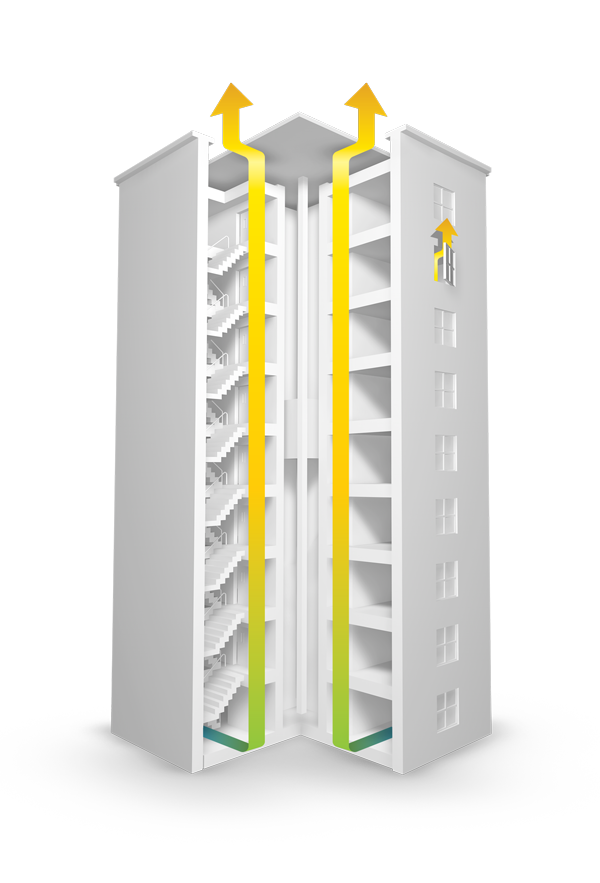Building’s energy challenges.
THE PROBLEM :
When it comes to the heating and cooling of your buildings, space temperatures are difficult to control.
Building’s energy challenges.
THE PROBLEM :
When it comes to the heating and cooling of your buildings, space temperatures are difficult to control.

Negative PressureWhen air is heated it rises upward inside the building through ducts, pipe shafts, elevator shafts and stairwells. As the heat rises it creates a negative pressure that sucks in even more outdoor air, especially at the lower levels of the building.negative pressure that sucks in even more outdoor air, especially at the lower levels of the building.

Occupants TendenciesMany occupants adjust their thermostats up or down to suit how they feel, with some preferring high thermostat settings.

ON / OFF TendenciesElectric baseboard heaters are normally fully ON or fully OFF and their output does not match their heat loss.
When air is heated it rises upward inside the building through ducts, pipe shafts, elevator shafts and stairwells. As the heat rises it creates a negative pressure that sucks in even more outdoor air, especially at the lower levels of the building.negative pressure that sucks in even more outdoor air, especially at the lower levels of the building.
Many occupants adjust their thermostats up or down to suit how they feel, with some preferring high thermostat settings.
Electric baseboard heaters are normally fully ON or fully OFF and their output does not match their heat loss.

THE SOLUTION
Our Energy Control System that delivers a 20 percent decrease on your heating and cooling costs each and every month. Saving you thousands of dollars in the process!

OvercapacityThe electric baseboard heaters in many of these buildings are usually oversized for the required heating load, since they have fixed increments of capacity and must have equal or greater capacity than the required heat loss. This overcapacity problem becomes even worse when the outdoor temperature is NOT subfreezing, which is most of the heating season.
» «
Open WindowsWhen an apartment is too warm the tenant’s usual reaction is to open a window. Cool air enters if the window is facing the wind, but air may only exit on the other exposures.
¤
InsulationMany interior walls and floors of apartment units are not insulated, so that Open windows on all but the lowest floors encourage even more heated air to rise in the building, drawing in even more outdoor air at the lower levels.
The electric baseboard heaters in many of these buildings are usually oversized for the required heating load, since they have fixed increments of capacity and must have equal or greater capacity than the required heat loss. This overcapacity problem becomes even worse when the outdoor temperature is NOT subfreezing, which is most of the heating season.
When an apartment is too warm the tenant’s usual reaction is to open a window. Cool air enters if the window is facing the wind, but air may only exit on the other exposures.
Many interior walls and floors of apartment units are not insulated, so that Open windows on all but the lowest floors encourage even more heated air to rise in the building, drawing in even more outdoor air at the lower levels.
